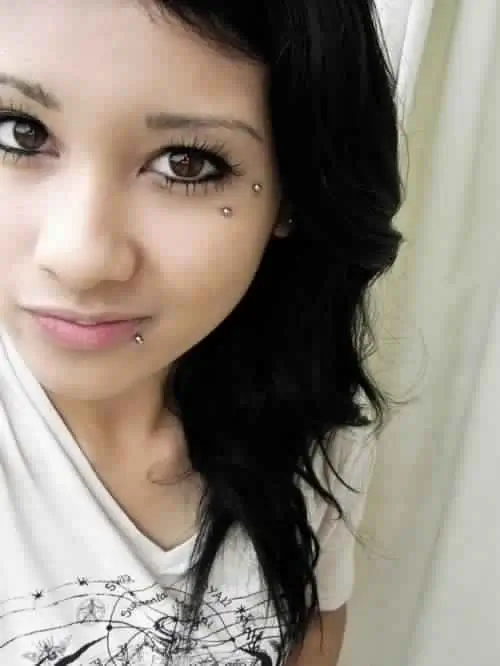
What Are the Signs of Eyebrow Piercing Rejection?
By Anya Petrova, Certified Piercer with 10+ Years of Experience
Table of Contents
Eyebrow piercings are a popular form of body modification, but like any piercing, they come with the risk of rejection. Eyebrow piercing rejection occurs when the body’s immune system perceives the piercing as a foreign object and attempts to expel it.
Symptoms of Eyebrow Piercing Rejection
- Redness, swelling, and pain around the piercing site
- Discharge of pus or other fluids
- Formation of a granuloma (a small, fleshy bump)
- Migration of the piercing out of the skin
Causes of Eyebrow Piercing Rejection
- Improper piercing technique: Piercing the eyebrow at an incorrect angle or depth can increase the risk of rejection.
- Infection: Bacteria or other microorganisms can enter the piercing site and cause an infection, leading to rejection.
- Allergic reaction: Some people may be allergic to the metal used in the piercing jewelry, which can trigger rejection.
- Trauma: Bumps, knocks, or other injuries to the piercing site can irritate the skin and increase the risk of rejection.
- Poor aftercare: Not following proper aftercare instructions can lead to infection and rejection.
How to Prevent Eyebrow Piercing Rejection
- Choose a reputable piercer with experience in eyebrow piercings.
- Make sure the piercing is done at the correct angle and depth.
- Use high-quality, hypoallergenic jewelry.
- Clean the piercing regularly with a saline solution.
- Avoid touching or playing with the piercing.
- Protect the piercing from trauma.
Eyebrow Piercing Rejection Aftercare
If you suspect your eyebrow piercing is rejecting, it’s important to seek medical attention immediately. Treatment may include:
- Antibiotics: To treat any infection.
- Removal of the piercing: If the rejection is severe, the piercing may need to be removed.
- Surgery: In rare cases, surgery may be necessary to repair the damaged tissue.
Eyebrow Piercing Rejection Pain
The pain associated with eyebrow piercing rejection can vary depending on the severity of the rejection. It can range from mild discomfort to severe pain.
Eyebrow Piercing Rejection Healing Time
The healing time for eyebrow piercing rejection depends on the severity of the rejection and the treatment received. It can take several weeks or months for the piercing to heal completely.
Eyebrow Piercing Rejection Home Remedies
There are some home remedies that may help to reduce the symptoms of eyebrow piercing rejection, such as:
- Applying a warm compress to the piercing site
- Soaking the piercing in a saline solution
- Using tea tree oil to clean the piercing
Eyebrow Piercing Rejection Antibiotics
Antibiotics may be prescribed to treat an infection that is causing eyebrow piercing rejection. Common antibiotics used include amoxicillin, penicillin, and erythromycin.
Eyebrow Piercing Rejection Surgery
Surgery may be necessary to repair the damaged tissue caused by severe eyebrow piercing rejection. This is typically done by a plastic surgeon.
Summary
Eyebrow piercing rejection is a condition that occurs when the body’s immune system perceives the piercing as a foreign object and attempts to expel it. Symptoms of rejection include redness, swelling, pain, discharge, and granuloma formation.
Causes of rejection include improper piercing technique, infection, allergic reaction, trauma, and poor aftercare. Prevention involves choosing a reputable piercer, using high-quality jewelry, and following proper aftercare instructions. Treatment for rejection may include antibiotics, piercing removal, or surgery.




